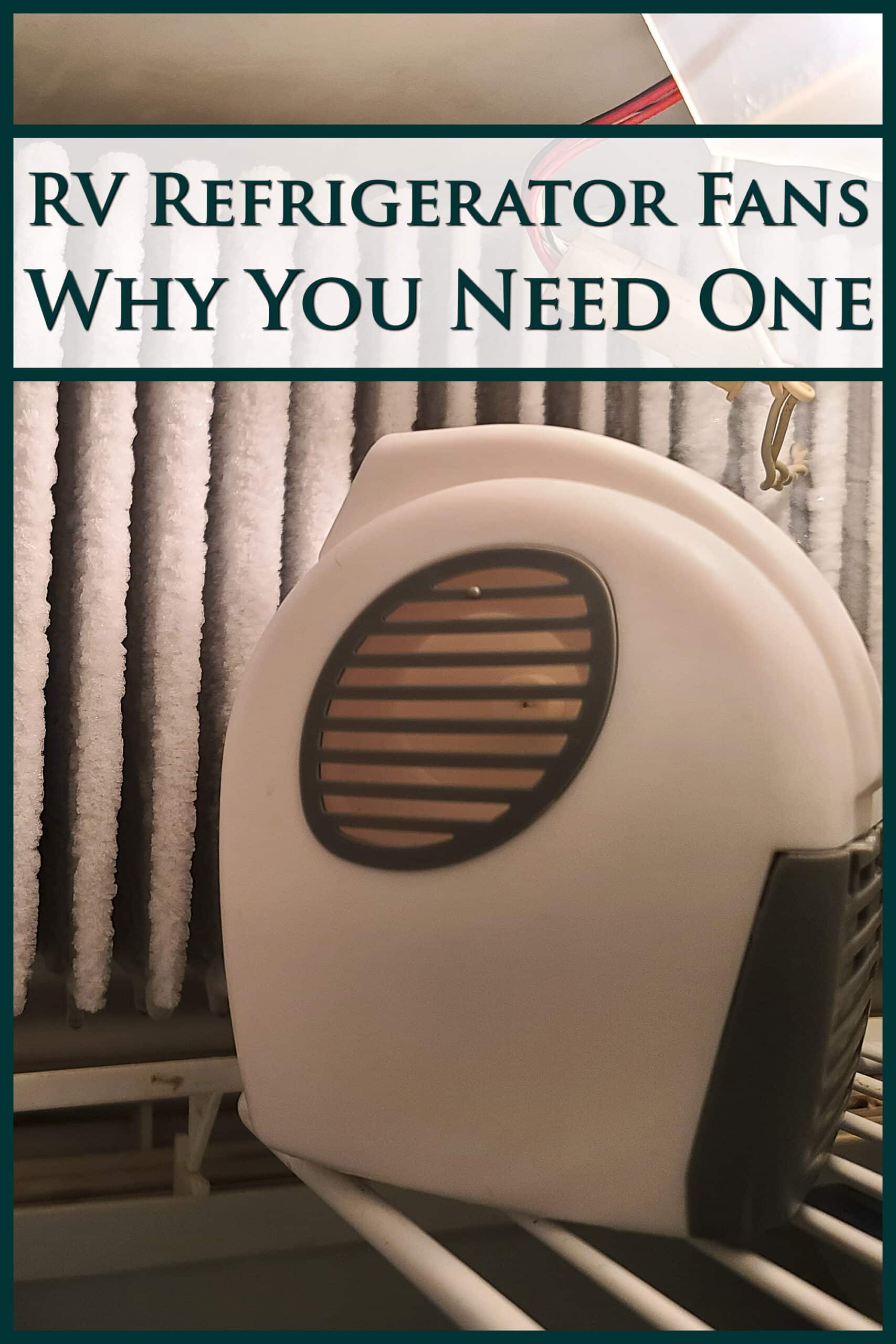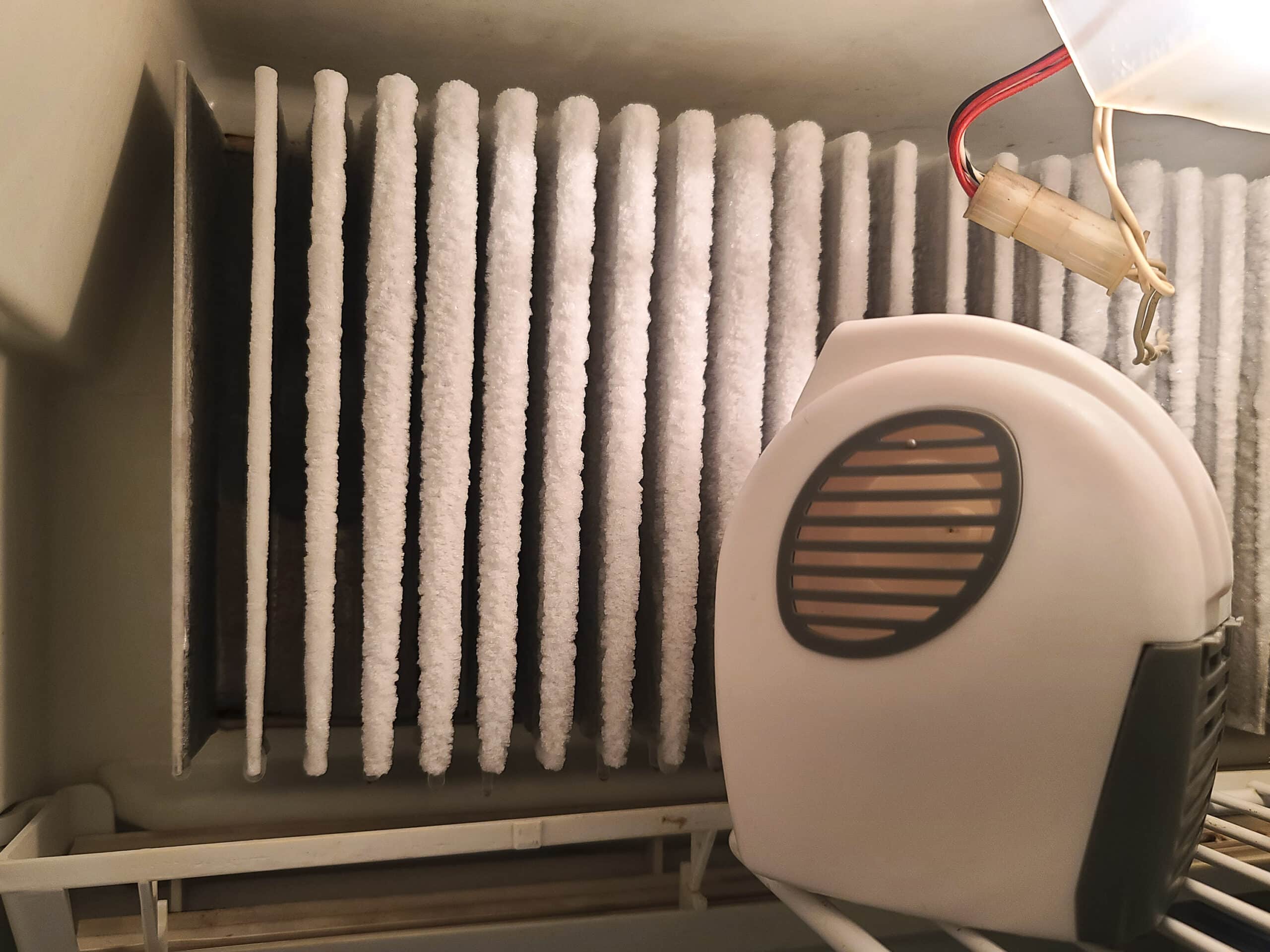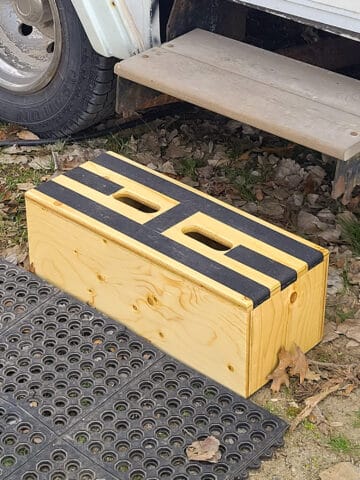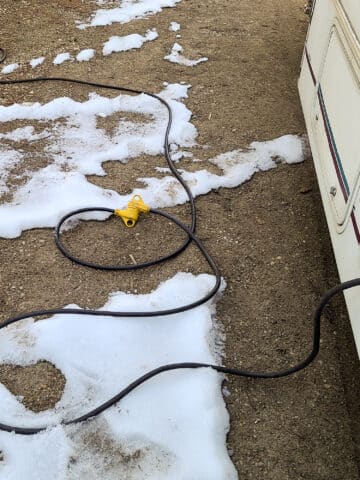Keep your chill with this post about your RV fridge. See if RV refrigerator fans can help keep your food fresh and safe while on the road.

RV Refrigerators and the need for circulation
You've probably noticed that the inside of your RV refrigerator looks different than the inside of your residential fridge. The main difference you'll see is an array of cooling fins in your RV fridge, which is absent in your household fridge.
People often ask, do RV fridges need internal fans for circulation? That's a great question and I'm going to do some testing to find out.
How a refrigerator works
All refrigerators work on the same basic principals, using liquid-to-gas and gas-to-liquid mechanisms to transfer heat. The type found in an RV is called absorption refrigerators.
Your household fridge uses a pump to make the system work, whereas absorption fridges use heat to make it work. That heat can come from propane or electricity. This makes it perfect for RVs so you can run off-grid using propane or solar panels.
I'll skip most of the science lesson on that for today. There are plenty of resources online to check out if you're interested in all of the cool details (pun intended!).
The end result is you get one zone that is cold, and one zone that is hot.
That hot area must be cooled down, that is the heat must be exhausted. This is because the gas inside the tube must be condensed back into a liquid for the process to work, which is why this zone is called the condenser.
What type of fan are we talking about?
When you look up RV fridge fan online, you will see some products that are designed to help exhaust that waste heat mentioned above.
A condenser fan goes on the exterior of your RV and will ensure your RV’s fridge will keep working on hot summer days bring high temperatures.
The condenser fan increases the flow of air over the fridge coils and will keep your fridge running even with extreme heat. A cooling unit can be placed on the coils on the back of the fridge, on a fridge vent on the side of the RV, or a roof vent.
Even though it's hot air, there's a large enough airflow to maintain the system.
I will not be testing this type of fan for two reasons. We do not travel in areas with extremely hot weather, therefore we don't experience fridge failure. Also there isn't much point in testing this type of fan, as it's well known that exterior vents and fans will help cool the refrigerator coil in extreme heat situations.
Your RV's refrigerator currently relies on convection, where warm air naturally rises, gets cooled by the fins, then the cool air drops down.
Many conditions impact how well the cold air circulates. This includes the amount of dead space (unused area of the fridge), how often you open the door, the ambient temperatures inside your RV, and how much food is in your fridge can impact this process.
These parameters could leave some food cool, and some warmer than desired. Unstable temperatures in the fridge is why some people use an RV refrigerator fans for a little help.
What and why
The simple solution is to use battery-operated units in our RVs which keeps blowing the warmer air across the cooling fins.
Do we really need this? How effective are the fans that you can buy?
Device selected
I did some digging to find the best RV refrigerator fans and was surprised to find there weren't many available on the market.
I considered making my own unit, hooking up some 100 mm fans for the job. Attaching to the cooling unit, the fin fans would blow air all over.
The problem with these computer fans in this kind of setup is I would still need to power the unit. There was no good way for me to bring in DC power to the inside of the fridge.
I set aside the idea of a DIY solution and decided to try out a commercial product instead.
After reviewing products and their user reviews, I selected the Camco brand fan, part number 44124. I trust the Camco products, and the competitor versions appeared similar in style, price and reviews.

It has a small fan size, but running it constantly is expected to have a positive effect in the fridge. Using a high power fan would work faster, but need a lot more power.
Test goals
My goal in testing this fan is not to find the best location in the fridge. This would require repeating my tests at many locations, and I don't feel it's worth the effort.
I feel pretty strongly that any circulation in the fridge is going to improve temperature control, provided adequate clearance for intake and exhaust. Therefore the specific location within the fridge will not have a significant impact.
I wish to know if it helps keep food in all locations at a steady temperature.
The test will be performed on the refrigerator portion, not the freezer. We know we don't have any issues with the freezer because there has not been any issues with thawed food.
Method - RV Refrigerator Fans Test Plan
My RV fridge is a 1999 Norcold N821. This is an 8 cubic foot fridge / freezer unit with the freezer on top.
11 small plastic shot glass cups will be placed in different areas of the fridge, with approximately 1 ounce of water in each. This allows for stable temperature readings, since air temperature changes so rapidly.

Part of my job in engineering is to perform equipment qualifications and validations similar to this. Although I would love to perform this test to a high quality test standard, the reality is that it's not needed.
One simple data set should allow for adequate confidence as to whether or not a fan is needed at all, and to illustrate its efficacy when used.
The control portion of the test is performed first, with the fan inside of the fridge but turned off. This allows the entire unit to be cooled to fridge temperature.
Batteries generate electricity via chemical reactions, which slow down in cooler temperatures. By allowing the fan to reach a cool temperature, we're performing a fair test. The cooled unit's maximum fan speed is expected to be slightly slower than at room temperature.
Secondary Test - Battery Life
A second test will attempt to determine battery life. This gets a little difficult because as the batteries become depleted the fan slows down; there's no clear point where the batteries are depleted.
The unit will be left on in the fridge and monitored over time. When it seems like the fan output is estimated approximately half of its full output, the test will be considered complete.
The output is expected to give an approximate amount of time expected before the batteries must be replaced. This is useful when going on long vacations so you know how many spare batteries you will need.
RV Refrigerator Fans - Test Results
Measurement of the water cups was performed as fast as possible, but it was noted that the temperature started increasing rapidly. By re-measuring a couple of the first cups after all 11 were completed, it could be seen that the temperature was already up about 2°F.
It is still relevant, however, to show comparative data. Each test was performed in the same manner with the same speed of test, so the results should be consistent.
By comparing the no-fan and with-fan data, the standard deviation of each set of data decreases when the fan is on, from 2.35°F to 1.83°F.
This means there was less variation in temperature when the fan was on. This can be seen graphically as well, in the boxplot below.

The effect might not appear large, but this can make a big difference in freshness. There is also a second improvement noted when the fan is on.
By placing the fan aimed at the fins, the ice melted in that area, increasing cooling efficiency. This allows you to run your fridge in more humid environments and for longer periods of time before removing ice buildup.


Battery Time Test
The length of time that the fan can run on a fresh set of batteries can vary by the brand of battery used. I used 2 new Amazon Basics D cell batteries.
As mentioned earlier, it’s difficult to say when the batteries are exhausted. The fan will slow down and it’s up to the user to determine when it’s no longer adequate.
After one full week of constant use in the fridge, the fan was still running strong. I’ve decided to end the test there because I’m happy with that amount of time.
I’ll keep a set of batteries on hand, but now I’m confident I don’t have to keep a constant eye on the fan.
RV Refrigerator Fans - Cooling Fan Test Conclusions
RV refrigerator fans help maintain a more controlled fridge environment in two ways. First, more consistent temperatures inside of the fridge. Second, better temperature control through reduction of ice buildup.
More consistent temperatures means you don't have to worry about finding the best place for extra sensitive foods.
For best results, place the fan facing the refrigerator’s fins. This will help reduce the ice buildup.
Ice buildup makes it more difficult for your fridge to properly control the temperature. If your fridge is on for a long time or in humid environments, it will still accrue some buildup.
The size of the RV refrigerator fans on the market impacts the ability to help. You wouldn't want to take up more space than necessary, but smaller fans are less effective.
By having the fan on all the time, you can use one of these small, silent fans to help control the temperature.
I think it's your best option to pick up a cooling fan for your fridge, it'll help keep your food cool as it should be. Even if you don't use it all the time, it's a great option to have available.
Share the Love!If you’ve made one of our recipes, be sure to take some pics of your handiwork! If you post it to Bluesky, be sure to tag us - @2NerdsInATruck, or you can tag us on TikTok, if you’re posting video. We're also on Pinterest, so you can save all your favourite recipes and park reviews to your own boards! Also, be sure to subscribe to our free email newsletter, so you never miss out on any of our nonsense. Well, the published nonsense, anyway! |






Leave a Reply